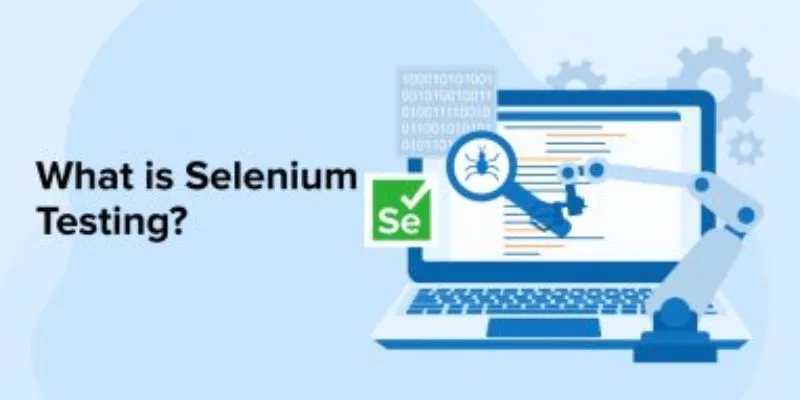
Automation has become the cornerstone of delivering high-quality products efficiently. Among the many tools available, Selenium has long stood as one of the most popular open-source frameworks for automating web applications. However, as software systems become more complex and user expectations rise, traditional Selenium testing approaches often face challenges such as test flakiness, maintenance overhead, and limited adaptability. This is where Artificial Intelligence (AI) is introduced to transform Selenium test automation and elevate it to the next level. If you want to master these advanced automation techniques, enrolling in a Selenium Course in Bangalore at FITA Academy can help you gain hands-on experience with AI-driven testing tools and real-world automation frameworks.
1. The Limitations of Traditional Selenium Testing
While Selenium offers a powerful framework for automating browser-based tasks, it requires significant manual effort to design, maintain, and debug scripts. Testers often encounter issues such as:
- Frequent script failures due to dynamic changes in the user interface (UI).
- High maintenance costs for updating locators or handling dynamic elements.
- Time-consuming debugging when tests fail due to minor changes in element identifiers.
- Limited self-healing capabilities mean that traditional Selenium tests don’t automatically adapt to UI changes.
These challenges can slow down release cycles and make automation less efficient. As organizations move toward continuous integration and delivery (CI/CD), there’s an increasing demand for more intelligent, adaptive testing approaches and that’s where AI plays a transformative role.
2. The Role of AI in Enhancing Selenium Automation
Artificial Intelligence (AI) tools like predictive analytics, NLP, and machine learning (ML) are now integrated into Selenium frameworks to make testing smarter and more efficient. To master these skills, consider joining a Selenium Course in Hyderabad for practical, hands-on training. The main goal of AI-driven Selenium automation is to reduce human intervention, improve test reliability, and accelerate feedback loops.
AI is improving Selenium testing in the following significant ways:
a. Intelligent Element Identification
AI-powered tools can automatically identify web elements using multiple attributes instead of relying on a single XPath or CSS locator. If an element’s properties change, the AI algorithm can still recognize it based on patterns and visual clues. This reduces test breakages caused by minor UI modifications.
b. Self-Healing Test Scripts
One of the biggest AI-driven advancements is self-healing automation. When a test fails because of a locator change or a missing element, the AI engine can automatically find an alternative locator or repair the broken script. This significantly reduces maintenance time and improves test suite stability.
c. Predictive Test Selection
Machine learning models can analyse historical test results to determine which tests have the highest chance of failing. This helps QA teams prioritise high-impact tests during regression testing, reducing execution time while maintaining test coverage. To learn these advanced AI-driven testing methods, you can enroll in a Selenium Course in Delhi and gain practical experience with real-world automation scenarios.
d. Visual Testing and Image Recognition
AI enables visual testing capabilities that go beyond DOM-based validation. By comparing UI screenshots using image recognition, AI can detect subtle layout shifts, color mismatches, or visual regressions that traditional Selenium tests might overlook.
e. Natural Language Test Creation
AI-powered platforms are introducing NLP-based test authoring, allowing testers to create Selenium tests using plain English commands. For example, a tester can write:
“Click on the ‘Login’ button and verify that the user is redirected to the dashboard.”
The AI then converts this statement into executable Selenium code, making automation more accessible to non-programmers.
3. Tools Combining AI and Selenium
Several modern testing tools and platforms now integrate AI with Selenium to simplify and enhance the automation process. Examples include:
- Testim.io – Uses AI for dynamic locator management and self-healing scripts.
- Mabl – Employs ML to identify UI changes and suggest test improvements.
- Applitools Eyes – Offers visual AI-powered testing that integrates seamlessly with Selenium. To explore such advanced tools and techniques, join a Selenium Course in Trivandrum and enhance your automation testing skills.
- Functionize – Uses NLP and AI to create and maintain automated tests with minimal code.
These tools help organisations achieve faster, smarter, and more stable test automation while leveraging the robustness of Selenium.
4. The Future of AI-Powered Selenium Testing
The integration of AI into Selenium automation is just the beginning. As AI continues to evolve, future Selenium frameworks are expected to include:
- Autonomous test generation, where AI automatically creates new tests based on user behavior data.
- Continuous learning systems, where the AI improves its accuracy with every test run.
- Predictive defect analysis, identifying potential bugs before they even occur.
These innovations will make test automation not just a reactive process but a proactive quality assurance strategy.
As organizations strive for continuous delivery and digital transformation, integrating AI with Selenium isn’t just an enhancement, it’s a necessity for staying competitive in the modern software landscape. To gain expertise in these advanced automation concepts, consider enrolling in a Selenium Course in Jaipur, where you can learn practical, AI-driven testing techniques that prepare you for the future of software testing. Embracing this fusion of AI and Selenium will enable teams to deliver high-quality applications with greater speed and reliability than ever before.
